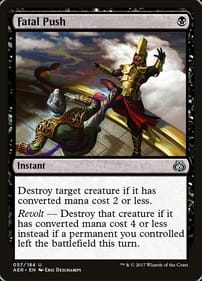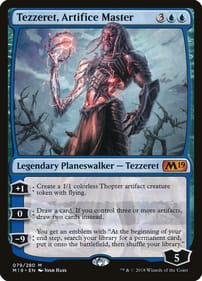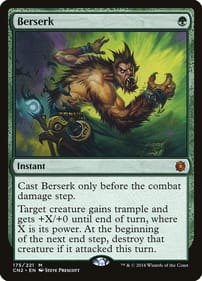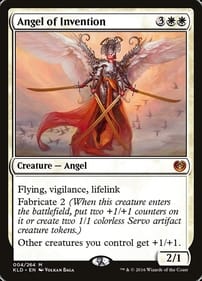Take A Graphic Trip Across Canada
By Dan Brown In honour of our national holiday, and as a way to protest the tariffs from our southern neighbours, many Canadians are travelling in their own backyard this summer. But what if you aren’t in a position to make the trek? Then take a trip across Canada – in graphic-novel form. That’s right, you can go from coast to coast to coast by reading the work produced by our dominion’s many talented comic creators. So here are suggestions for how to acquaint yourself with the regions of this great nation by looking through the comics set in those places. The East Coast: No trip to the Maritimes would be complete without a shipwreck, so let’s start our journey with Call Me Bill by London graphic novelist Lynette Richards. It’s a mystery, it’s an adventure story, it’s a reclaiming of an LGBTQ figure from the past – and it all begins with a maritime disaster off Nova Scotia, where Beal Art grad Richards lives in Terence Bay. I also recommend D.Boyd’s Denniveniquity and Chicken Rising, which cover Boyd’s formative years in Saint John, which is the city in New Brunswick – the one in Newfoundland and Labrador is St. John’s. Got it? La Belle Province: My first suggestion is Michel Rabagliati’s Paul Up North, part of which takes place during a snowstorm in Laurentian cottage country. And of course, the title character didn’t wear his winter jacket: There is no more Canadian predicament than that! As for the Montreal portion of our cross-Canada tour, I’m proposing Are You Willing to Die For the Cause?, which recounts the early years of the FLQ’s reign of error (the would-be liberators targeted Canada Post mailboxes with their homemade bombs). It was drawn and written by publishing house Drawn & Quarterly founder Chris Oliveros. Ontario outside Toronto: First stop, Jeff Lemire’s Essex County, which lovingly recreates the evocative landscape and taciturn people of Southwestern Ontario. Also recommended is Walter Scott’s Wendy, Master of Art, which is set in Hell, a small Ontario city that has an awful lot in common with Guelph. Toronto: Yes, I agree with you, there are way too many graphic novels set in Canada’s largest city. So instead of inundating you with a long list of options, I urge you to hunt down Matthew Blackett’s Wide Collar Crimes, a collection of comic strips that were published in Eye Weekly in the early 2000s. No other comic evokes the absurdities of life in Toronto like Blackett’s work does. The Prairies: So there’s Shelterbelts, set in a rural Mennonite community in Manitoba, as well as Chester Brown’s Louis Riel, which likewise attempts to capture the vastness of the landscape. I know this might be a stretch, but for Saskatchewan I recommend any Superboy adventure pencilled by artist Tom Grummet in the 1990s – in an interview at that time, he told me the wheat fields he drew near Smallville were patterned after the farms outside the window of his Saskatchewan home. Alberta: Since the tar sands are so important to Canada’s economy, you will want to check out Ducks, Kate Beaton’s account of her two years working in Northern Alberta’s oil patch. This story is not for the faint of heart, so definitely not suitable for young readers. British Columbia: Worth hunting down is the New Yorker’s cartoon edition from Dec. 28, 2020. That issue features the short graphic story Junban from Jillian Tamaki, and is adapted from her grandfather’s notes. The six-page reminiscence covers the same themes as George Takei’s They Called Us Enemy, and achingly calls to mind the Fraser River of the past. The North: Finally, we come to the land of the ice and snow! You may have an easier time getting a hold of Scott Chantler’s Northwest Passage – set in Rupert’s Land – than the anthology of Nelvana of the Northern Lights stories put out by Hope Richardson and Rachel Richey in 2014, but it’s worth it. Taken together, these two selections offer bookends of Canadian comic-book culture, starting in the Second World War with the Canadian whites and moving up to the current day with talents such as Chantler. Yes, this list is incomplete! That’s by necessity. That’s also why I’m looking for suggestions from readers like you in the comment box below. What books would you add to the list? Let’s hear them, as well as a brief description of the parts of this country they represent. And happy Canada Day! Dan Brown has covered pop culture for more than 32 years as a journalist and also moderates L.A. Mood’s monthly graphic-novel group.
New Oliveros Book Details FLQ’s Reign of Error
By Dan Brown The new book from cartoonist Chris Oliveros, Are You Willing to Die For the Cause?, is an insightful look at a dark chapter in Canadian history. It’s even, in a way, darkly funny.It’s the tale of a bunch of stumblebums cosplaying as terrorists who – if you believe them – didn’t set out to take any lives, but still ended up with plenty of blood on their hands.You know what happened during the October Crisis of 1970 in Quebec, right? Well, this graphic novel fills you in on what was happening in the decade prior to that pivotal moment. It is, in comic terms, the origin story of the FLQ, the group (I hesitate to call it an “organization”) that would eventually prompt Pierre Trudeau to trigger the War Measures Act.You may know Oliveros as the founder and former publisher of Drawn & Quarterly, which has become a force in the comics world since its inception in 1989.This volume is the first in a two-part series about the Front de Liberation du Quebec – the second book, yet to come, will deal with events that are better-known, like Trudeau’s hard-nosed response to the supposed “parallel power” that arose in la belle province by advocating, violently, for separation.By the end of the 1960s, different iterations of the FLQ had gained notoriety with, among other glorious feats, the blowing up of innocent Canada Post mailboxes. One FLQ honcho even imagined he was a contemporary of Fidel Castro, the communist revolutionary who had taken over Cuba not long before. If Oliveros’ goal is to show the would-be Quebec liberators to be amateurs, he does a good job.One of the FLQ members stores sticks of dynamite in his apartment pantry, next to the breakfast cereal his children eat. A guiding manifesto is dictated, seemingly improvised on the spot. And on at least one occasion, a bomber has to find his own way to the target site because no one in the FLQ has access to a car. (The authorities come across not only as inept, but corrupt to boot.)It’s clear the storytelling project here is to underline the difference between the grand ambitions of the terrorists, and how events actually played out in the real world. So the reader will see page upon page setting forth what was supposed to happen as envisioned in the plans of the FLQ’s commanders, followed by a second sequence outlining the less-than-impressive real results. Or Oliveros will depict a historical figure like former Montreal mayor Jean Drapeau recalling the reign of terror, then the next panels will outline what the historical record indicates really happened. For example, the FLQ robbery of a gun store in 1964 wasn’t supposed to go off the rails, no one was supposed to get hurt, yet the “panic and confusion” that ensues once the would-be terrorists storm the place turns the raid into a “fiasco” in which two employees are left dead. Oliveros goes over the scene several times to illustrate what happens in the fog of a play war.And in case you don’t agree with any of his conclusions, at the end of Are You Willing to Die For The Cause?, Oliveros carefully explains where he got key details, such as dialogue.Even better, the artist/writer pulls the curtain back on himself, showing the gaps in his own creative process. He is open about how he compressed some events in his narrative, and fictionalized other panels in the interests of clear storytelling, which makes sense: Although Oliveros was born in the 1960s, he wasn’t, you know, in the room where any of this happened.So it’s consistent with his overall project that he would point to the constructed nature of this comic. That doesn’t make the book any less tragic, or comedic. Of course, the ultimate irony is how despite all of the FLQ’s actions, including the dramatic and deadly ones that will be the subject of Oliveros’s next graphic novel, Quebec remains part of a united Canada. As this book demonstrates, the best-laid plans often go awry.Dan Brown has covered pop culture for more than 31 years as a journalist and also moderates L.A. Mood’s monthly graphic-novel group.








